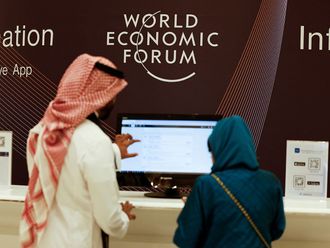Dubai: Oman is prepared to “take any action” to protect its currency peg even as the oil rout strains the finances of the Middle East’s largest producer outside of Opec, the country’s central banker said.
The riyal’s peg to the US dollar has substantial benefits for Oman, “despite concerns arising from the imported inflation,” the central bank’s Executive President Hamoud Bin Sangour Al Zadjali said in an emailed response to questions on Thursday. “Our experience shows that Oman has the resilience and inner strength to withstand lower oil prices and sustain its growth process.”
Oil and gas account for about 85 per cent of state revenue in Oman, and trader bets that authorities would allow the Omani riyal to weaken spiked in August after China devalued the yuan and Kazakhstan allowed its currency to float. After years of surpluses, Oman’s budget deficit is expected to widen to 14.8 per cent of economic output this year, from 1.5 per cent last year, according to the International Monetary Fund.
The riyal has been pegged to the dollar since 1973 and there is no proposal to change the rate, held at $2.6008 per riyal since 1986, Al Zadjali said.
“The benefits of the fixed peg are substantial, given our economic structure and high degree of openness in both current and capital accounts,” he said. “The fixed peg provided the country with a stable exchange rate which helps in promoting investment, growth and diversification of the economy.”
The oil rout has made reforms more urgent for Oman, which has smaller fiscal reserves than neighbouring Saudi Arabia and the UAE, the IMF said this year. Both countries have said they have no plans to decouple from the US currency.
Higher spending on jobs and social benefits has pushed Oman’s budget break-even to $108 a barrel last year, the IMF said.
The government’s main economic objective is to “avoid any slowdown in the growth process” and continue efforts to diversify, Al Zadjali said. “With a proper mix of financing options there will not be much problem in financing higher fiscal deficits envisaged under the scenario of lower oil prices.”
One-year forward contracts for the Omani riyal reached their highest level in almost 14 years in August, though they’ve since fallen by 40 per cent, according to data compiled by Bloomberg.












